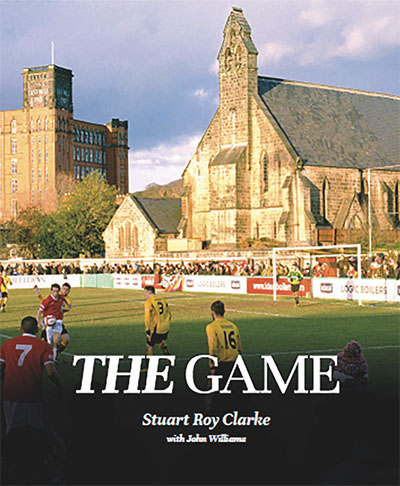
Bluecoat, £25
Reviewed by Charles Morris
From WSC 382, January 2019
Buy the book
A lazy description of this large hardback would be a “coffee table book”. It certainly boasts glossy photographs and a striking cover worthy of display, but its rich and multi-layered contents reward the brain as much as the eye.
Stuart Roy Clarke, the renowned football photographer, has assembled a beautiful book of two distinct halves. The first is an edited transcript of conversations about the history of football to the present day between himself and football sociologist John Williams, while the second contains his own favourite and most popular pictures.
Their exchanges range from the game’s origins, how the job of manager became widely recognised only in the 1950s after Herbert Chapman’s pioneering pre-war work, through to the Premier League era of marketing and mega-riches. Included are the essential role of fans, their rivalries and the game’s meaning for them, together with outstanding chapters on village and women’s football. Any sentimentality is tempered by discussion of hooliganism, racism and institutionalised homophobia.
The text is combined with either Clarke’s own pictures or historic newspaper photographs to illustrate their topics. In particular, one of a boyhood David Bowie in his 1957-58 Bromley primary school team stands out, as does the dignified image of three England Lionesses. The latter says as much about these players’ character, skill and determination as any wordsmith’s lengthy paean to women’s football.
While Clarke tends to be the more romantic and flies the occasional whimsical kite, Williams gently pulls the string back to earth with data and academic scrutiny. Yet the talk is always entertaining, challenging and insightful. Citing the success of anti-racism campaigns in British football, Williams nevertheless adds a warning: “Problems among some fans abroad seem to be growing, with re-emerging forms of extreme nationalism and intolerance often expressed at football. We can’t discount it returning to the UK.”
After the verbal pleasures come the main visual delights. Clarke’s landscapes of stadiums, match and supporter scenes are wonderfully framed, capturing the light and atmosphere against stunning backdrops. Equally striking is the humour that runs through his work. The look on a prostrate non-League goalkeeper’s face after conceding a goal is priceless, as are the bulging eyes of various dismayed supporters. He makes you work, too; the rear view of an Oxford United fan standing on the terraces in 1990 seems relatively ordinary until your eye spots the tiny item placed beside him on the crush barrier – a party popper, ready for his personal goal celebration.
Overall, The Game is a balm for those disillusioned by the greed and arrogance of modern football’s top strata, restoring one’s faith in the sport’s fundamental and unchanging joys. This book won’t fit in a stocking, but as Christmas approaches it is difficult to think of a better present for a fellow fan.